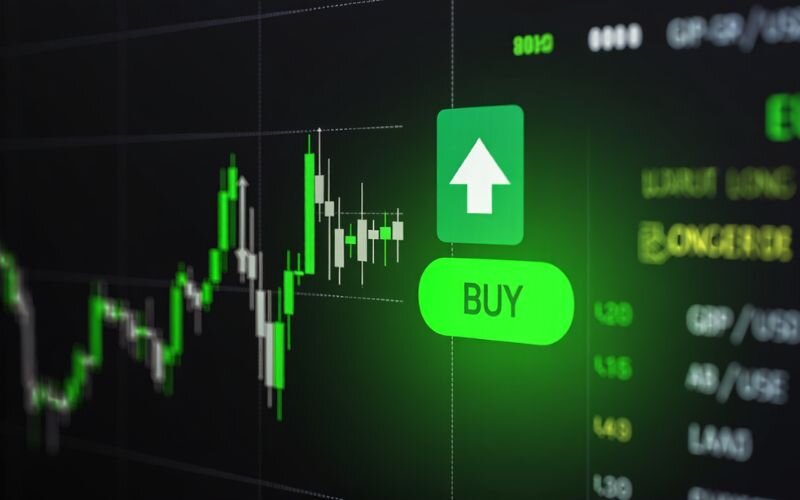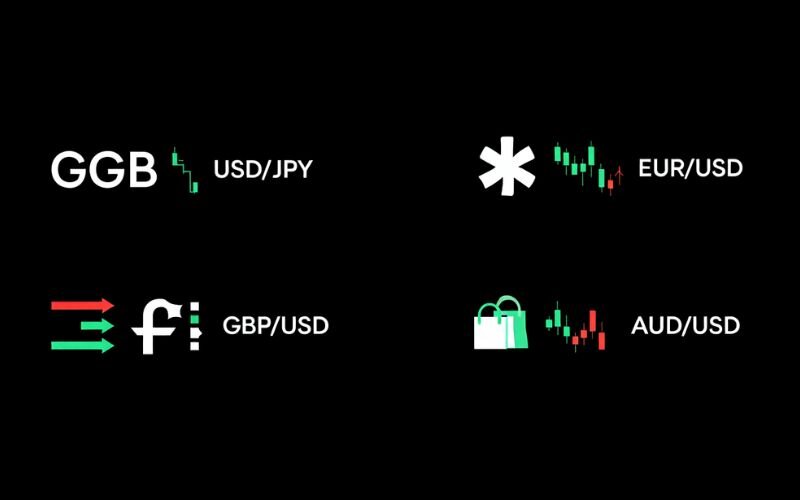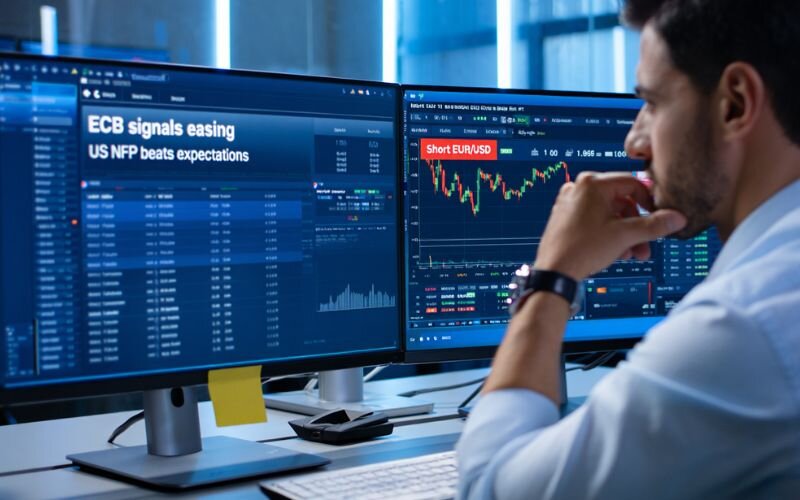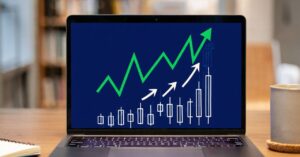Knowing when to go long or short in Forex is one of the most essential skills for any trader aiming to profit in the dynamic currency markets. This ability to buy or sell currency pairs depending on market conditions opens opportunities in both rising and falling markets.
In this article, you will find forex long and short explained clearly and comprehensively, covering the key concepts, strategies, and analysis techniques needed to confidently decide your trading direction. Whether you are new to Forex or looking to sharpen your skills, understanding when to take long or short positions is critical for effective risk management and maximizing profit potential.
1. Understanding the basics: What does it mean to go long or short?
In the simplest terms, your position reflects your expectation of future price movement for a specific currency pair.
1.1. Going long (Buying)
When you go long in Forex, you are essentially buying a currency pair with the expectation that its value will increase. You buy the base currency (the first currency listed in the pair) and simultaneously sell the quote currency (the second currency).
For instance, entering a long position on EUR/USD means you're purchasing Euros while simultaneously selling US Dollars. Your goal is to sell the pair back later at a higher price, thus making a profit on the difference. Traders go long when they are bullish on the currency pair, meaning they believe its price will rise due to factors like positive economic data for the base currency's economy or favorable technical analysis patterns.

1.2. Going short (Selling)
Conversely, when you go short in Forex, you are selling a currency pair with the expectation that its value will decrease. In this case, you sell the base currency and simultaneously buy the quote currency.
If you go short on EUR/USD, you are selling Euros and buying US Dollars. The objective is to buy the pair back later at a lower price, profiting from the price decline. Traders go short when they are bearish on the currency pair, anticipating a price drop based on negative economic news, unfavorable technical indicators, or other market analysis.
2. Factors influencing the long vs. short decision
Deciding whether to go long or short isn't a random guess; it's based on careful analysis and a well-defined trading strategy. Multiple elements influence the situation:
2.1. Technical analysis
Technical analysis focuses on examining past price movements and chart patterns to anticipate future market trends. Key technical factors include:
- Trends: Identifying the prevailing market trend (uptrend, downtrend, or sideways/ranging) is crucial. The adage "the trend is your friend" often guides traders to go long in an uptrend and go short in a downtrend.
- Support and resistance: Refer to key price areas where the market has previously shown significant buying or selling interest. Traders might go long near a support level (expecting a bounce higher) or go short near a resistance level (expecting a rejection lower).
- Chart Patterns: Formations like triangles, flags, head and shoulders, or double tops/bottoms can signal potential continuations or reversals, guiding the long/short decision.
- Technical Indicators: Tools like Moving Averages (MA), Relative Strength Index (RSI), MACD, and Bollinger Bands provide signals about momentum, overbought/oversold conditions, and trend strength, aiding the decision-making process.
2.2. Fundamental analysis
Fundamental analysis looks into economic indicators, political events, and social trends that can impact the value of currencies.
- Economic data releases: Reports on GDP, inflation (CPI), employment figures, manufacturing data (PMI), and retail sales can significantly impact currency prices. Strong data for a country's economy might support a long position on its currency, while weak data might suggest a short position.
- Interest rate decisions: Central bank policies, particularly changes in interest rates, are major drivers. Higher interest rates often attract foreign investment, strengthening a currency (suggesting a long position), while lower rates can weaken it (suggesting a short position).
- Geopolitical events: Political stability, elections, trade disputes, and major global events can create volatility and influence currency direction.
- Market sentiment: Overall market mood (risk-on vs. risk-off) can affect demand for certain currencies (e.g., safe-haven currencies like USD, JPY, CHF vs. riskier commodity currencies like AUD, NZD).

2.3. Your trading strategy and risk management
Your personal trading style (e.g., scalping, day trading, swing trading, position trading) and risk tolerance also play a role. A scalper might take quick long and short trades based on minor fluctuations, while a position trader might hold a long or short position for weeks or months based on long-term fundamental views. Crucially, risk management rules, including setting stop-loss and take-profit orders, must be applied regardless of whether you go long or short.
See more related articles:
- Top 20 forex acronyms every trader must know
- US Dollar Index drops sharply amid Trump’s EU tariff threats and fiscal concerns
- Mistakes New Traders Make When Misusing Terms
3. When to go long or short in Forex
3.1. When to go long in Forex
Consider going long (buying) a currency pair when:
- Technical analysis indicates an uptrend, bullish chart patterns, or strong buy signals from indicators.
- Price is bouncing off a significant support level.
- Fundamental analysis suggests the base currency is likely to strengthen relative to the quote currency (e.g., positive economic news, anticipated interest rate hikes).
- Overall market sentiment is positive towards the base currency or risk assets in general (if applicable).
- Your trading plan generates a valid buy signal according to its predefined rules.
3.2. When to go short in Forex
Consider going short (selling) a currency pair when:
- Technical analysis indicates a downtrend, bearish chart patterns, or strong sell signals from indicators.
- Price is being rejected at a significant resistance level.
- Fundamental analysis suggests the base currency is likely to weaken relative to the quote currency (e.g., negative economic news, anticipated interest rate cuts).
- Overall market sentiment is negative towards the base currency or favors safe-haven assets (if shorting a riskier currency).
- Your trading plan generates a valid sell signal according to its predefined rules.
4. Practical example: EUR/USD
Imagine the European Central Bank (ECB) signals a potential interest rate hike due to rising inflation in the Eurozone, while the US Federal Reserve indicates a pause in its rate hikes. This fundamental backdrop could make traders bullish on the Euro relative to the US Dollar.
Simultaneously, technical analysis of the EUR/USD chart shows the price breaking above a key resistance level and forming a bullish continuation pattern on the daily timeframe.
Combining these fundamental and technical factors, a trader might decide to go long on EUR/USD, anticipating further price appreciation. They would place a buy order, set a stop-loss below the recent support level to manage risk, and define a take-profit target based on further resistance levels or their risk/reward ratio.
Conversely, if the ECB expressed concerns about economic growth and hinted at easing policy, while US economic data came in stronger than expected, traders might become bearish on EUR/USD and decide to go short.

Making informed decisions about whether to go long or short requires continuous learning and access to reliable market analysis. H2T Finance serves as a dedicated resource hub, offering in-depth knowledge, timely news updates, and expert market analysis specifically for Forex trading.
Whether you're analyzing technical patterns, interpreting economic indicators, or refining your trading strategy, H2T Finance provides the tools and insights needed to confidently decide on market direction.
Visit H2T Finance to enhance your understanding of long and short strategies and stay ahead in the Forex market.
5. Frequently asked questions (FAQ)
5.1. Can I lose more than my deposit when going long or short in Forex?
A1: Yes, especially when using leverage. Leverage increases the size of both gains and losses in a trade. If the market moves significantly against your position, losses can exceed your initial margin and potentially your entire account balance if proper risk management (like stop-loss orders) isn't used or if negative balance protection isn't offered by your broker.
5.2. Is it easier to profit from going long than going short?
A2: Not necessarily in Forex. Unlike some stock markets where short selling might have extra rules or costs, going short in Forex is mechanically identical to going long. Traders can find opportunities to earn profits in both upward and downward market trends. Success depends on correctly predicting the direction and managing the trade, not on whether you chose long or short.
5.3. How long should I hold a long or short position?
The holding period depends entirely on your trading strategy and timeframe. Scalpers might hold positions for seconds or minutes, day traders for minutes to hours (closing before the market closes), swing traders for days or weeks, and position traders for months or even years. Your exit strategy should be defined before entering the trade.
5.4. What happens if I go long on one pair and short on another related pair?
This is a form of hedging or creating a synthetic pair. For example, going long EUR/USD and short GBP/USD simultaneously creates exposure related to the EUR/GBP pair. Understanding currency correlations is vital when holding multiple positions, whether long or short.
5.5. Do I need different strategies for going long versus going short?
While the core principles of analysis apply to both, some traders find certain patterns or indicators work slightly better in bullish (long) or bearish (short) markets. However, a robust trading strategy should ideally provide clear signals for both buying and selling opportunities based on its rules.
6. Conclusion: Embracing market duality
Mastering when to go long or short in Forex is fundamental to navigating the currency markets effectively and capitalizing on opportunities regardless of market direction. Making informed decisions requires a solid understanding of both technical and fundamental analysis, combined with a disciplined approach to trading.
At H2T Finance, traders can access in-depth resources, expert market analysis, and practical tools especially in the crucial area of Risk Management to help manage potential losses and protect their capital. Proper risk management strategies, such as setting stop-loss and take-profit orders, are essential no matter which position you take.
By leveraging the knowledge and tools provided by H2T Finance, you can enhance your trading strategy, confidently choose when to go long or short, and navigate the Forex market with greater assurance.




